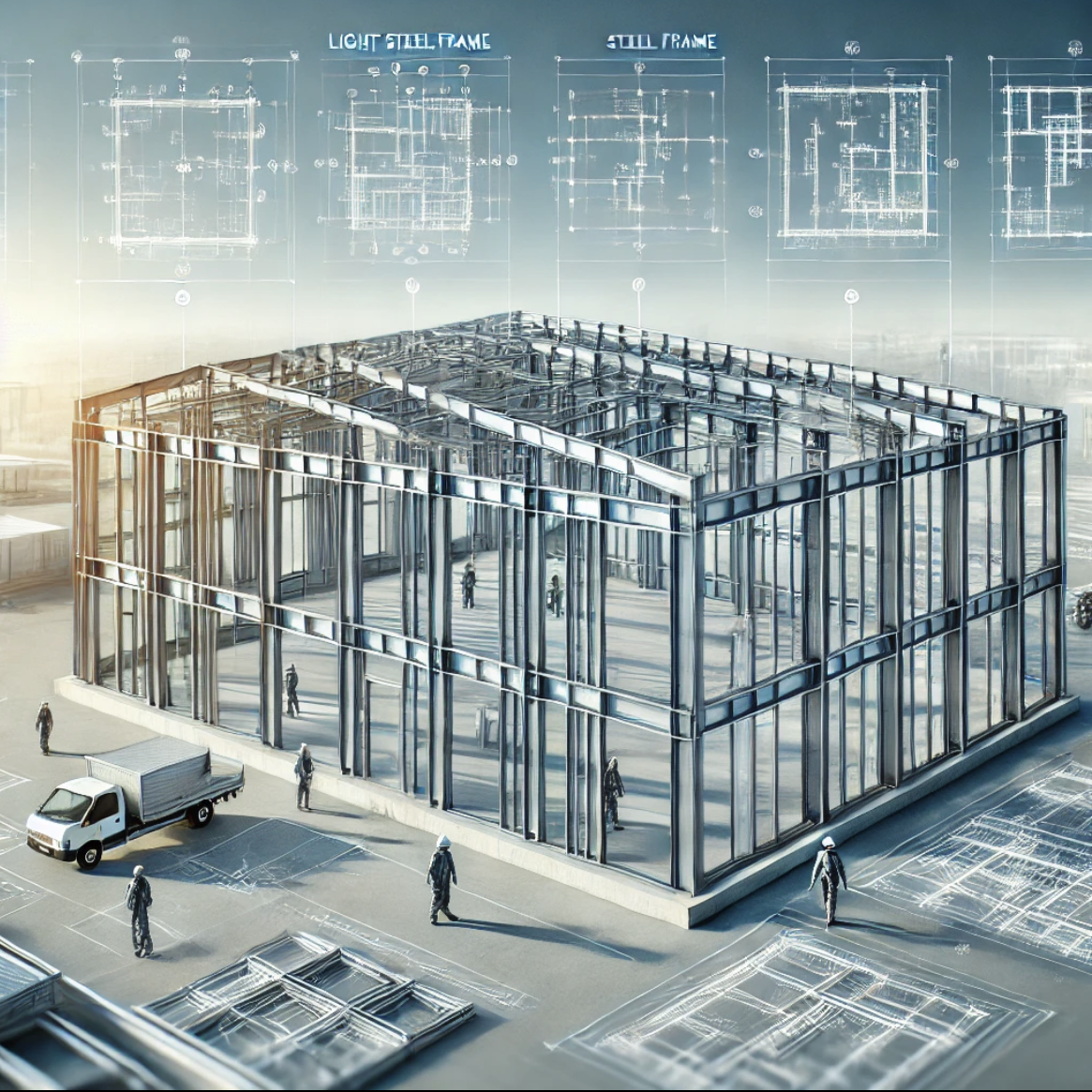Light Steel Frame Construction: The Smart, Modern Way to Build
Introduction
Light steel frame construction (LSF) is revolutionizing the construction industry with its efficiency, durability, and sustainability. As an advanced method of building using cold-formed galvanized steel sections, LSF offers a viable alternative to traditional construction techniques. In this article, we will explore the benefits, process, applications, and cost-effectiveness of LSF construction, particularly for residential and low-rise buildings.
What is Light Steel Frame Construction?
Light steel frame construction refers to the use of cold-formed steel sections to create the structural framework of buildings. These steel members are lightweight, durable, and precisely manufactured using computer-controlled machines. The framing includes vertical studs, horizontal tracks, and other elements that form the skeleton of walls, floors, and roofs.
Unlike traditional wood or masonry construction, LSF systems are pre-engineered, prefabricated, and assembled on-site with minimal waste and high speed. This makes LSF a popular choice in regions where time, labor cost, and seismic safety are crucial factors.
Benefits of Light Steel Frame Construction
- Speed of Construction: One of the biggest advantages of LSF is its rapid assembly. Since components are prefabricated in factories, on-site construction time is significantly reduced.
- Durability and Strength: Steel is inherently strong, non-combustible, and resistant to termites, mold, and rot. LSF structures offer excellent longevity and require minimal maintenance.
- Lightweight Structure: The lightweight nature of LSF reduces the need for deep foundations, lowering overall construction costs.
- Earthquake Resistance: LSF buildings perform well under seismic loads due to their flexibility and reduced mass, making them suitable for earthquake-prone areas.
- Precision and Quality Control: Factory-fabricated components ensure consistency and accuracy, reducing errors during construction.
- Eco-Friendly: Steel is 100% recyclable, and LSF construction generates less site waste compared to traditional methods. Additionally, better insulation and airtightness reduce energy consumption in finished buildings.
- Design Flexibility: Architects can work with a wide range of shapes, facades, and layouts without the limitations posed by concrete or masonry systems.
Applications of LSF Construction
- Residential housing (single-family homes, villas, townhouses)
- Modular homes and prefabricated units
- Educational buildings and dormitories
- Healthcare facilities
- Commercial and retail buildings
- Temporary or relocatable structures
LSF vs Traditional Construction
| Feature | LSF Construction | Traditional Construction |
|---|---|---|
| Speed | Fast (30-50% quicker) | Slow |
| Material waste | Minimal | High |
| Structural weight | Lightweight | Heavy |
| Resistance to elements | Fire, termite, and mold resistant | Susceptible |
| Design flexibility | High | Moderate |
| Foundation requirement | Reduced | Extensive |
| Sustainability | High (recyclable steel) | Low |
Steps in LSF Construction Process
- Design and Engineering: Architects and structural engineers collaborate to develop a precise model using BIM (Building Information Modeling) software.
- Prefabrication: Steel components are manufactured off-site based on the design specifications. CNC machines cut and shape the profiles with exact measurements.
- Transportation to Site: The prefabricated steel parts are delivered to the construction site in a ready-to-assemble format.
- Frame Assembly: The light steel frames are quickly bolted or screwed together to form the walls, floors, and roof structure.
- Installation of Panels and Insulation: Exterior and interior sheathing, insulation, and vapor barriers are installed.
- MEP (Mechanical, Electrical, and Plumbing) Integration: Service ducts and utilities are incorporated within the steel frame system without major alterations.
- Finishing: External facades, internal walls, floors, and ceilings are completed with a variety of finishes (plasterboard, tiles, etc.).
Cost of LSF Construction
Although the upfront material cost of steel is often higher than wood or masonry, the total cost of LSF construction can be lower when considering:
- Reduced construction time
- Less labor required
- Minimal waste and rework
- Lower foundation costs
- Long-term savings on maintenance and energy consumption
On average, LSF construction costs range between $100 to $200 per square meter, depending on location, design complexity, and finishes used.
Sustainability and Environmental Impact
Sustainability is a key advantage of light steel frame construction. Steel is one of the most recycled materials in the world. Moreover, the construction process itself minimizes dust, debris, and water usage. LSF buildings are often designed to meet energy efficiency standards such as LEED or BREEAM.
Challenges of LSF Construction
While LSF offers many advantages, there are some challenges to consider:
- Requires skilled labor for proper installation
- Thermal bridging can occur if not properly insulated
- Limited local availability in some regions
- Initial material cost may be higher than wood
Conclusion
Light steel frame construction is transforming how we design and build modern structures. With its unmatched speed, durability, and eco-friendliness, LSF is an ideal solution for residential and commercial projects alike. As the demand for sustainable and cost-efficient construction grows, embracing LSF is not just a trend—it’s the future.

